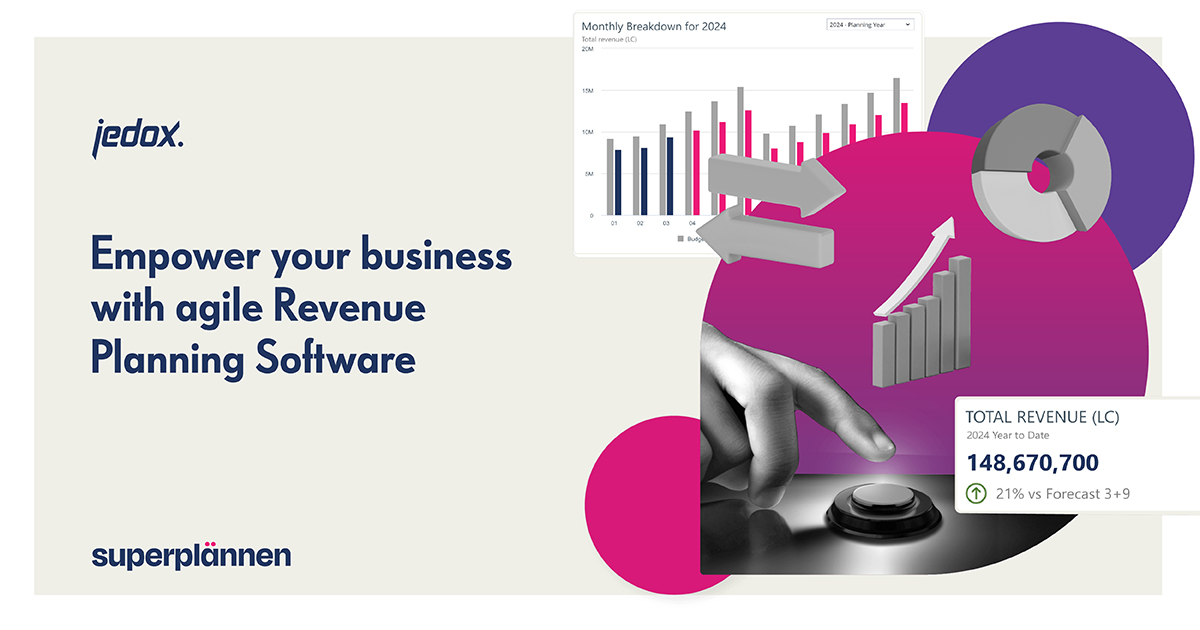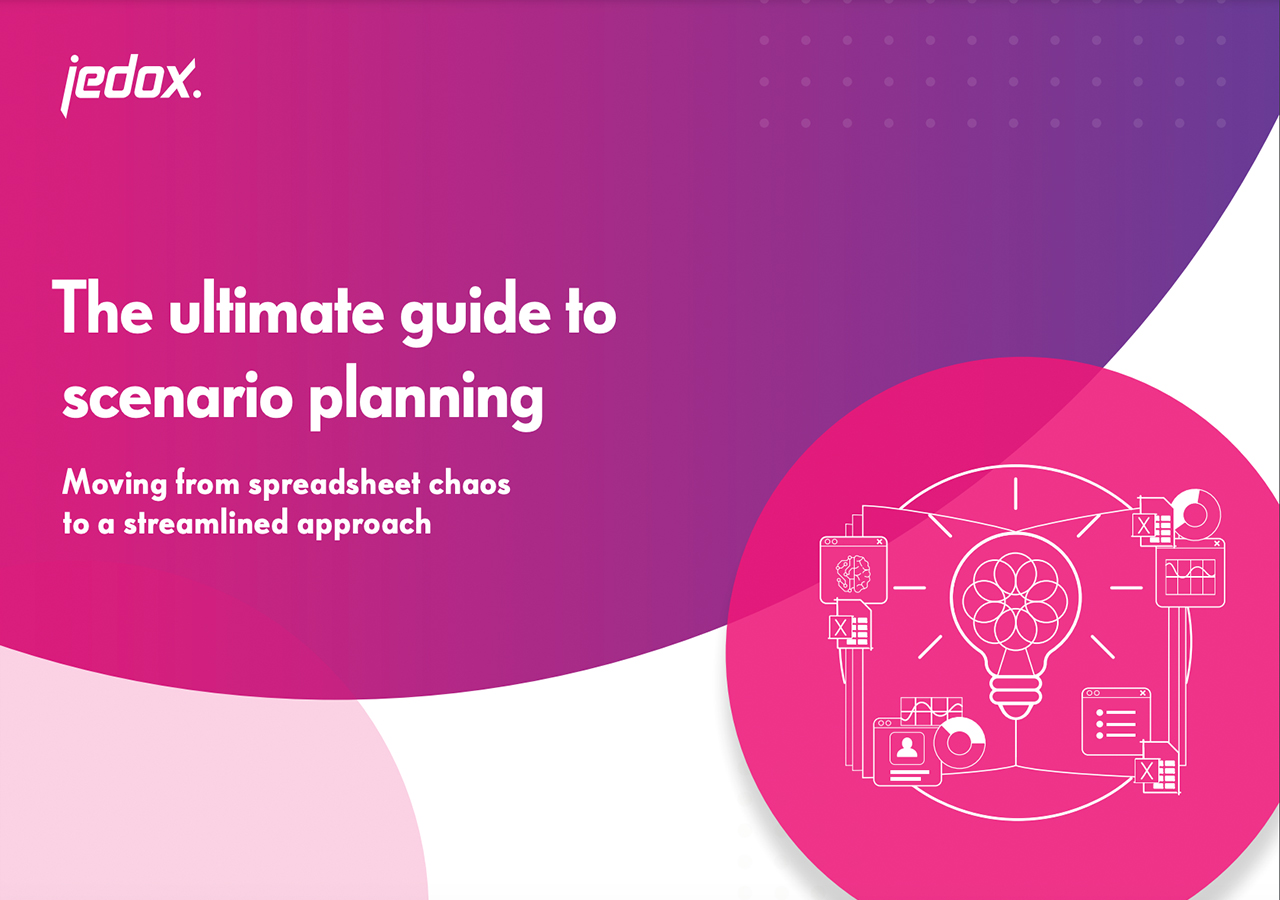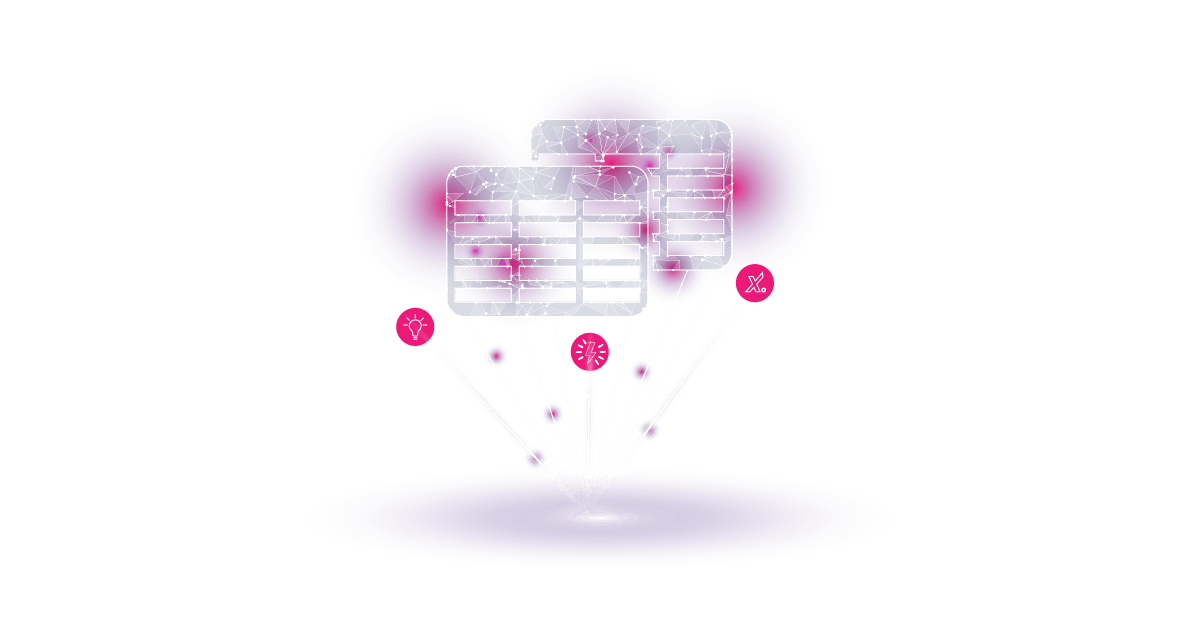
Revenue forecasting: Align business objectives, create a solid budget foundation, and make better decisions
Revenue forecasting plays a crucial role in business planning. It provides organizations with insights into their future financial performance and helps them set realistic goals. Through an analysis of historical performance data, market trends, and other important factors, organizations can also identify potential risks and optimize sales strategies. At its best, accurate revenue forecasting should serve as the backbone for informed strategic decision-making, financial planning, budgeting, and resource allocation. Essentially, the process is both a compass and a rudder: helping organizations to reasonably estimate how much money they’ll make in the future and steering them toward unexplored opportunities.
Optimizing revenue forecasting with the latest technology has never been more essential and relevant for organizations that want to enhance their financial performance and strategic planning. Forecasting methods have normally relied on historical data and manual inputs, which are prone to human error and bias. Advanced technologies, such as machine learning and artificial intelligence, analyze vast amounts of data in real time and identify patterns and trends that human analysts miss. This leads to more precise revenue forecasts, reducing the likelihood of underestimating or overestimating future revenues.
Incorporating advanced technology into revenue forecasting is not just a modern business trend but a strategic necessity. It enhances accuracy, integrates real-time data, improves decision-making, optimizes resources, provides a competitive edge, builds stakeholder confidence, and ensures scalability. As a result, organizations significantly improve their financial forecasting capabilities. Investing in technological solutions for revenue forecasting is an investment in the organization’s future stability and growth.
What a revenue forecast is (and isn’t)
Revenue forecasting is the process that helps organizations to predict future financial performance based on a comprehensive analysis of historical data, economic conditions, current market trends and predictive projections. It involves creating models of how much an organization would earn through quantitative and qualitative information over that period, arming top executives with relevant information to help them finetune operational planning and strategic decision-making.
While a revenue forecast and a revenue projection are similar in that they predict revenues, there are differences. While forecasts are data-driven — incorporating likely assumptions, expectations and actual plans — projections are based on hypotheticals, or “what-if” scenarios, planned initiatives, and strategic objectives. Simply, forecasts are based on evidence while projections are more aspirational. Another difference is that a revenue forecast can help organizations identify potential opportunities and risks.
Why is revenue forecasting important?
Revenue forecasting helps organizations provide insights into their future financial performance and helps them set attainable goals. This means they can anticipate revenue streams, identify potential risks, and optimize sales strategies. Revenue forecasting is the basis for financial planning, budgeting and resource allocation, enabling organizations to align operations with revenue targets. Revenue forecasting also helps organizations measure the feasibility of new ventures and determine the potential returns on investment. As a result of better understanding their revenue potential, they are in a stronger position to secure any needed financing or investment.
Here are some benefits of revenue forecasting:
- Cash flow: With effective revenue forecasting, organizations can better plan for cash flow to ensure they make payments for expenditures on time and can anticipate shortages.
- Budgeting: Nothing is more essential for organizations than to create accurate and realistic annual budgets, and allocate resources such as capital, inventory, hiring, and marketing.
- Decision-making: Solid revenue forecasting enables organizations to make sound, credible, educated determinations about projects, hiring, investments, products, and sales.
- Investor interest: Investors often look at revenue forecasts to gauge an organization’s current position and future financial growth potential to help them decide whether they should invest in it.
- Risk management: Revenue forecasting can also help organizations spot weaknesses and threats, and course correct if needed.
What are some methods for forecasting revenue?
There are two distinct approaches to revenue forecasting. One is a qualitative model that uses expert opinions, market research and analyses and other business insights to predict revenues. The other is a quantitative model that takes a data-driven method that views trends and patterns in historical data and current trends to predict future outcomes. While the latter approach is considered more accurate than the qualitative path, it may not present the whole picture for a reliable projection. Here are several quantitative methods of forecasting revenue that can be explored.
Time series analysis: This model identifies and projects patterns based on historical data. This helps organizations better understand trends, seasonal or cyclical data, “noise,” and unexplained variations. This method may not be as accurate during economic instability or uncertainty as historical data is less relevant.
Moving average forecasting: Also based on historical data, this model typically calculates the average, or weighted average, of an organization’s revenues over a specified period to smooth out fluctuations. For example, the model may calculate revenue over a three- or five-month period. This model might identify current trends and be more beneficial for short-term revenue projections, but it won’t account for significant or long-term changes affected by external factors.
Straight-line forecast: This straightforward model analyzes historical growth rates (or rates of decline) to predict future revenues. This model uses historical data directly extrapolated linearly. While organizations can easily calculate future growth with this model, it is an oversimplification that won’t reflect real-world scenarios that are more intricate and complex when market conditions and other factors change.
What are the steps to create a revenue forecast?
- Determine the time frame: How far into the future do you want to forecast revenues? Your specific objectives, such as hiring more employees or opening a new location, will determine the time frame.
- Collect the data: You can’t have any forecast without accurate, reliable historical data like sales, revenue, market conditions, and economic trends.
- Consider various factors: Organizations should understand, examine, account for, and include any assumptions and factors — whether internal (products and services, staffing, marketing campaigns) or external (consumer demand, regulations, economic conditions, industry developments, competitor performance) — into the calculation.
- Select a method: The assumptions made, and an organization’s business model should determine the most appropriate forecasting model, such as a time-series analysis.
- Adjust: Regularly reviewing and assessing the accuracy of a forecast is needed to achieve an objective. To ensure that forecasts remain relevant, organizations should adjust to account for discrepancies or changing factors.
Avoid these common mistakes when forecasting revenue
Forecasting revenue is a crucial task, and a difficult one. Organizations should always be on the lookout for common mistakes resulting from misplaced confidence or complacency. Here are several challenges that organizations need to consider:
Past may not be prologue: An over-reliance on historical data to predict future revenues through a straight-line forecast may ignore current or emerging factors, whether internal or external, that can significantly affect revenues. What’s been true in the past may not necessarily continue.
External affairs: While historical data drives calculations for revenue projection models, organizations should be mindful of external factors whether market conditions, seasonality, or other events. But leaders and managers shouldn’t limit themselves to what they can see or know, but what they can imagine. Organizations must integrate these “what-if” scenarios — for instance, considering best- or worst-case hypotheticals — into their thinking and revenue forecasting processes to understand the spectrum of outcomes.
Fill in the blank: If an organization is using incomplete or erroneous data, it could trigger a cascading effect that could jeopardize subsequent business decisions. Completeness and quality of the data is crucial. It’s important for every organization to have a “single source of truth” in which all data can be found on a central platform so all departments can access, view, and, most importantly, work from the same set of information.
Change of scenery: It’s imperative that organizations constantly update their revenue forecasting models as market conditions change and new data is collected. Continuous monitoring is a necessary task.
Why choose Jedox for revenue forecasting
Forecasting revenue is critical for corporate leaders to make effective decisions for their organization’s future direction and viability. It determines their overall planning including budgeting, cash flow, hiring, business development, acquisitions and investing, among other elements. There’s no room for error when projecting future top-line growth.
Technology can help remove uncertainty in such an endeavor. Jedox goes a step further with its Revenue Planning Software. It enables organizations to view consistent, streamlined, and strategic revenue planning quickly and efficiently. The software can create weekly, bi-weekly, or monthly forecasts with reliable, accurate data for all planning, modeling, and forecasting needs. It integrates any ERP or CRM and can allow users to investigate organizational data to a granular level.
- Precision forecasting: Jedox’s intuitive modeling software provides significant time savings across various planning processes, enabling organizations to quickly address unpredictable market dynamics. And these capabilities don’t require extensive training or software customization.
- Cross-functional collaboration: Jedox provides reliable real-time data and streamlines reporting processes, providing users with data-driven insights across the entire enterprise. Sales, finance, operations, or corporate leadership teams will all share the same revenue planning process and view the same information.
- Strategic decision-making: With its pre-built, best-practice planning models, Jedox takes the guesswork out of corporate decision-making. Leaders can create granular “what-if” scenarios by seeing how different business and economic factors alter revenue projections.
- Better outcomes: Through pre-built integrators, Jedox can connect an organization’s different ERP and CRM systems whether SAP, Microsoft Dynamics or Salesforce. It can provide customized integrations for any other system as well. With Jedox AIssisted™ Planning, an organization can even create a “digital twin” to help identify growth accelerators or compare scenarios such as gauging the potential success of a new product before launch.





